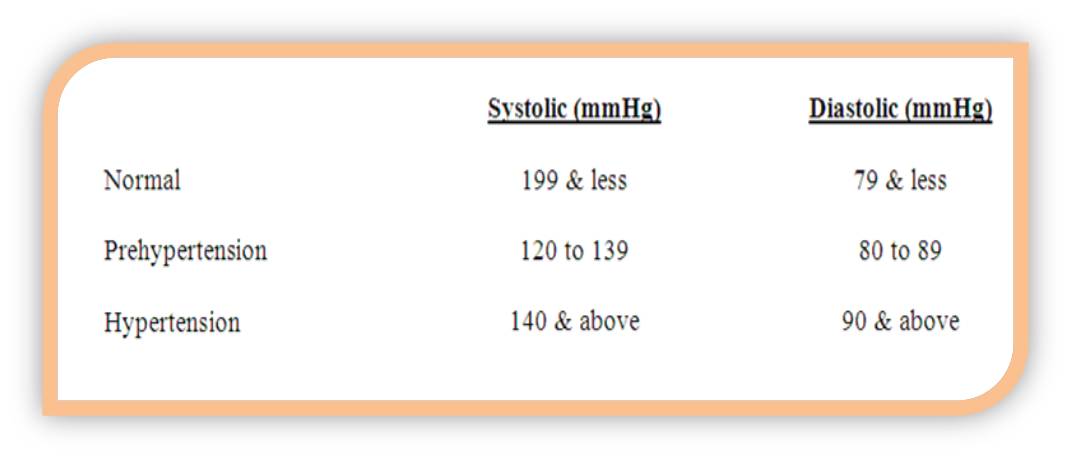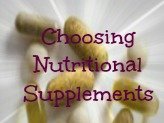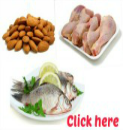High Blood Pressure: Hypertension
High blood pressure is a dangerous condition which makes the heart to work very hard. Blood pressure can be described as the force that the blood exerts against the walls of arteries. It is usually highest when the heart is pumping blood to the arteries, and lowest between beats when the heart relaxes. This pressure rises and falls all through the day.
What is High Blood Pressure?
High blood pressure (hypertension) is a high pressure, force or tension in the blood arteries.
It is also defined as systolic blood pressure of 140 mm hg or above and a diastolic blood pressure of 90 mm hg or beyond.
Systolic pressure is the force in the arteries as the heart contracts, while diastolic pressure is the force in the arteries when the heart relaxes.
Did you know…60,000 miles of blood runs through your body. As the heart forces the blood through these vessels, the fluid is under pressure. Blood pressure is measured in milliliters of mercury (mm hg), usually expressed in two numbers: systolic blood pressure is the higher number and diastolic blood pressure is the lower number. Ideal blood pressure is 120/80 or below this.
What is Prehypertension?
This is a condition where your blood pressure is borderline high. It is a situation where you do not have high blood pressure now but you could develop it in future.
High-blood pressure has been described as the silent killer. This is because sometimes you may have no any symptoms. Over the years this problem can damage artery walls which will lead to a heart disease.
Blood Pressure Classification
The following is a summary of how the blood pressure is classified

Causes of High Blood Pressure
Many times the causes of this problem differ. These causes may include narrowed arteries, fast or forceful heart beating, and having large volume of blood than normal.
These situations are known to increase pressure against the walls of the arteries. Some medical problems are also known to increase blood pressure.
The good news is that 90 percent of these causes can be prevented and controlled.
Treatment of High Blood Pressure (Hypertension)
Of all hypertension, 90 % has no definite cause. This category is called essential hypertension and is treatable.
The following have been used effectively to treat this condition; aerobic exercise, weight reduction, a low-salt/low-fat and high potassium/ high calcium diet, lower alcohol and caffeine intake, smoking cessation, stress management and anti-hypertensive medication.
The remaining 10 percent of hypertensive cases are caused by pathological conditions such as narrowing of the kidney arteries, glomerulonephritis (a kidney disease), tumor of the adrenal glands and narrowing of the aortic artery.
With this type of hypertension the pathological cause has to be treated before the blood pressure problem can be corrected.
Antihypertensive medicine often is the first choice of treatment but they produce many side effects which include lethargy, sleepiness, sexual difficulties, higher blood cholesterol and glucose levels. A physician may end up treating these side effects and about half of the patients stop taking the medication within the first year of treatment.
How to Keep Blood Pressure under Control
A preventive approach is easier than trying to bring it down once it is high. Regardless of your history, high or low, you should have it checked routinely.
To keep it as low as possible, exercise regularly; lose excess weight; eat less salt and sodium-containing foods; do not smoke; practice stress management; do not consume more than two alcoholic beverages a day if you are a man, one if you are a woman; and consume more potassium-rich foods such as potatoes, bananas, orange juice, cantaloupe, tomatoes, and beans.
The dietary approach to stop hypertension (DASH)- which emphasizes fruits, vegetables, grains., and dairy products- lowers systolic blood pressure by 11 points; diastolic by 5.5 points.
Those who are taking medication for hypertension should not stop unless the prescribing physician gives the go ahead. If it is not treated properly, high blood pressure can kill. By combining medication with the other treatments, drug therapy eventually may be reduced or completely eliminated.
Quick Tips for Lowering Blood Pressure
- Consume healthy foods that are good for the heart health
- Avoid stress as much as possible
- Ensure that you have daily exercise for 30 minutes, 4 days every week.
- Lose weight if you are overweight.
- Stop smoking and drinking excess alcohol
If your condition does not respond to these lifestyle changes, then seek a doctor’s advice on the best prescription for your situation.
People with hypertension and Prehypertension have high chances of developing type 2 diabetes. You should be checked for type 2 diabetes if your pressure readings are borderline or too high.
Foods that Lower Blood Pressure
- Non-fat yogurt
- Nuts and legumes
- Sunflower seeds
- Bananas
- Potatoes
- Spinach
- Beets
In addition, reduce your sodium intake. A small reduction of sodium in your diet will lower your blood pressure. Limit your sodium intake to 2300mg per day or even less.








New! Comments
Have your say about what you just read! Leave me a comment in the box below.